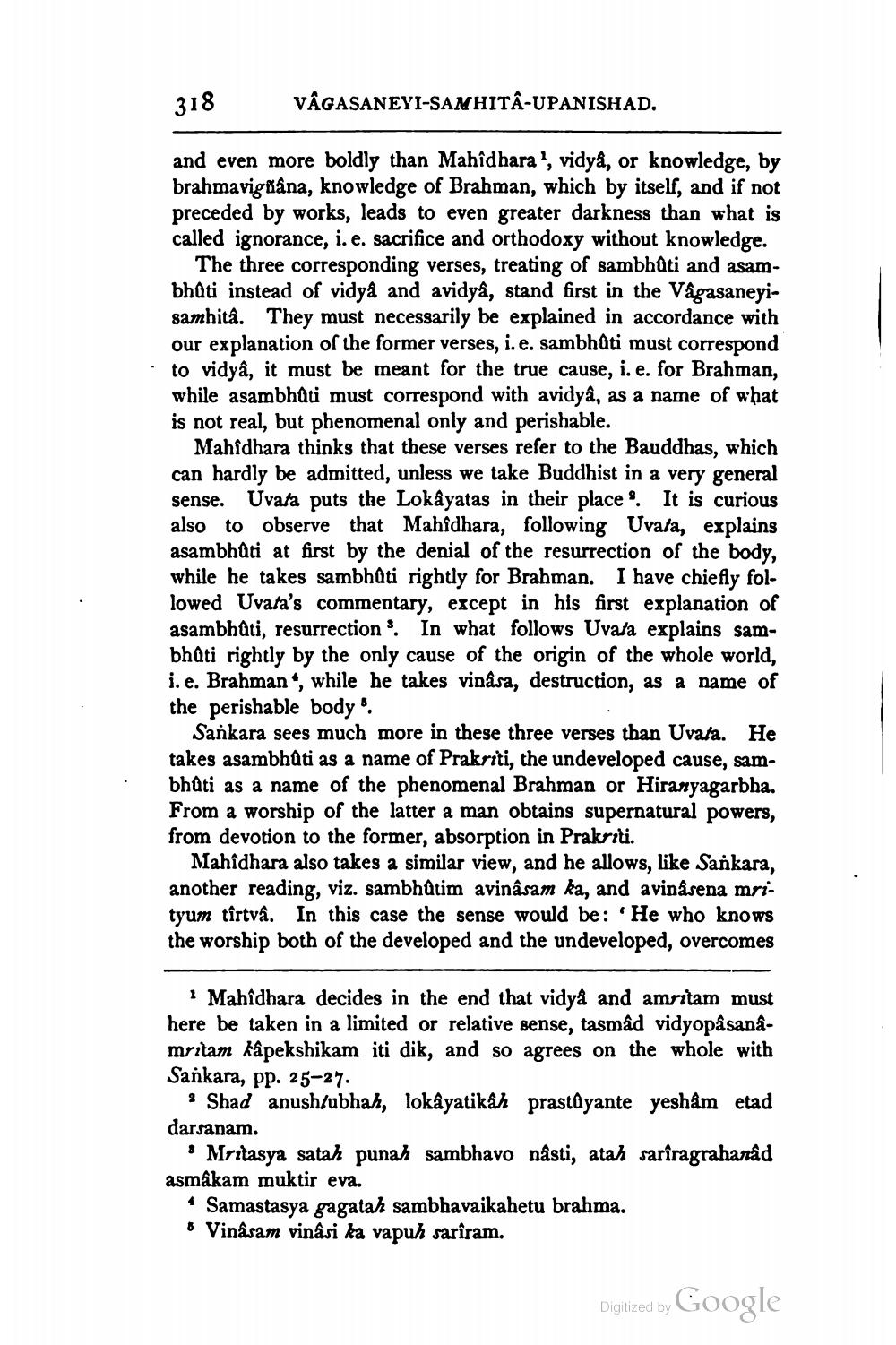________________
318
VÂGASANEYI-SANHITÂ-UPANISHAD.
and even more boldly than Mahîdhara', vidya, or knowledge, by brahmavigåâna, knowledge of Brahman, which by itself, and if not preceded by works, leads to even greater darkness than what is called ignorance, i.e. sacrifice and orthodoxy without knowledge.
The three corresponding verses, treating of sambhůti and asambhati instead of vidya and avidya, stand first in the Vågasaneyisamhitâ. They must necessarily be explained in accordance with our explanation of the former verses, i.e. sambhäti must correspond to vidyâ, it must be meant for the true cause, i. e. for Brahman, while asambhūti must correspond with avidyâ, as a name of what is not real, but phenomenal only and perishable.
Mahîdhara thinks that these verses refer to the Bauddhas, which can hardly be admitted, unless we take Buddhist in a very general sense. Uvata puts the Lokayatas in their place. It is curious also to observe that Mahîdhara, following Uvata, explains asambhQti at first by the denial of the resurrection of the body. while he takes sambhūti rightly for Brahman. I have chiefly followed Uvata's commentary, except in his first explanation of asambhäti, resurrection. In what follows Uvala explains sambhūti rightly by the only cause of the origin of the whole world, i. e. Brahman, while he takes vinasa, destruction, as a name of the perishable body
Sankara sees much more in these three verses than Uvata. He takes asambhati as a name of Prakriti, the undeveloped cause, sambhati as a name of the phenomenal Brahman or Hiranyagarbha. From a worship of the latter a man obtains supernatural powers, from devotion to the former, absorption in Prakriti.
Mahîdhara also takes a similar view, and he allows, like Sankara, another reading, viz. sambh@tim avinasam ka, and avinasena mri. tyum tîrtva. In this case the sense would be: 'He who knows the worship both of the developed and the undeveloped, overcomes
· Mahîdhara decides in the end that vidyå and amritam must here be taken in a limited or relative sense, tasmad vidyopasanamritam kapekshikam iti dik, and so agrees on the whole with Sankara, pp. 25-27
* Shad anush/ubhah, lokâyatikah prastůyante yesham etad darsanam.
• Mritasya satah punah sambhavo nâsti, atah sarfragrahanâd asmakam muktir eva. • Samastasya gagatah sambhavaikahetu brahma.
Vinâsam vinasi ka vapur sariram.
Digitized by Google




